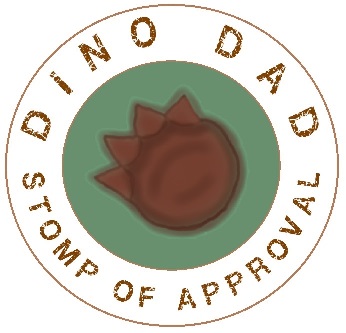As my interest in paleontology has deepened and expanded over the years, I have found myself increasingly fascinated by the history of this field of study. How did it develop, and who were the individuals that most influenced its growth? Some truly fascinating stories crop up throughout the history of paleontology, and we find just such a story in “The Dinosaurs of Waterhouse Hawkins”, written by Barbara Kerley and illustrated by Brian Selznick.
This nonfiction storybook provides a much-needed child’s-level account of an important moment in the history of paleontology, chronicling the later life of natural history artist Benjamin Waterhouse Hawkins, and the creation of his famous Crystal Palace dinosaur sculptures. Kerley covers all the major beats in Waterhouse Hawkins’ story, from the construction of the models, to the Iguanodon dinner party and Crystal Palace Exhibition, to the planned but ultimately doomed New York’s Central Park sequel. She also includes more personal details, writing in a clear, easy-to-read style that still evokes strong sympathies from the reader for our story’s hero, investing us in both his successes and misfortunes.
Selznick illustrates these moments in Waterhouse Hawkins’ life in lovely, simplified style that manage to convey an incredible sense of atmosphere for a children’s book. I found myself particularly impressed by Selznick’s willingness to utilize relatively empty space in heightening the pathos of certain scenes: evoking feelings of anticipation & excitement in some images, as well as loss & sorrow in others. In a similar vein, a small, murky picture of the corrupt New York politician Boss Tweed emphasizes his shadowy and threatening nature, while also suggesting a degree of small mindedness, which very effectively encapsulates his villainous role in the destruction of the New York counterparts to the Crystal Palace dinosaurs.
As for the actual content of the illustrations, Selznick renders his subjects in a rather charming style, of the sort that you might find in older storybooks. While not exactly hyper-realistic, they nevertheless remain very true-to-life. Selznick even copied Waterhouse Hawkins’ own illustrations to recreate the sketches littering the walls of his workshop.

This book really knocks it out of the park for me. I’m always drawn to anything that recounts the history of a given subject, and the history of paleontology seems particularly under-studied. Don’t think however that this book skates by on the relative lack of competition, however. “The Dinosaurs of Waterhouse Hawkins” stands as an outstanding work of children’s non-fiction literature in its own right. Between the excellent writing and the moving, evocative artwork, I can say without reservation that few other books deserve the Dino Dad Stomp of Approval more than this! (Note: I’m ending the review here, but scroll down for further reading and some interesting links!)

UPDATE: I’ll keep the links below as they all still retain their usefulness in studying the Crystal Palace project, but I should not that Mark Witton & Ellinor Michel have since released the definitive examination of this moment in history, with their book The Art and Science of the Crystal Palace Dinosaurs. It is a triumph of historical research in the study of paleontology, and a must-read for any self-respecting paleonerd!
Addendum: I’d be remiss if I didn’t mention some of the inspirations for this post. While I would have eventually gotten around to this book anyway, I had the Crystal Palace Dinosaurs on the brain at this particular time due to a lot of online activity surrounding them lately. Several talks have been given lately on the models, including, among others, the great Darren Naish of Tetrapod Zoology fame. It’s definitely worth giving his TetZoo article on the models a read. He recounts some fascinating details and interesting interpretations of some of the features of the displays. I have to agree with his assessment that despite their inaccuracies, we should perhaps consider them among the most accurate works of paleoart ever made.
I’ve been seeing a lot lately about the proposed Bridges to the Crystal Palace Dinosaurs. Consider helping the Friends of the Crystal Palace Dinosaurs raise money to improve the walkways at Crystal Palace Park! Historically the models have remained on a large island surrounded by a pond, so one can only enjoy them from afar. But with your help, perhaps soon they will be able to finance some pedestrian bridges so anyone can get a close up view of these amazing models!
Most to the point however, paleoartist Jed Taylor bears most of the responsibility for my current Crystal Palace kick, with his entertaining exploration of an alternate version of Jurassic Park set in Victorian England, featuring of course period-accurate dinosaur reconstructions! On the subject of illustrations with an amazing sense of atmosphere, his re-imagining of the T-rex breakout scene (see below) really knocks me off my feet! Keep an eye on this artist, everyone! Be sure to visit his online shop if you like what you see. (I have it straight from the source that he’s planning a few other images in this series, so be sure to follow Jed on social media, and subscribe to the #JurassicPark1854 hashtag to join in on the fun!)









7 comments